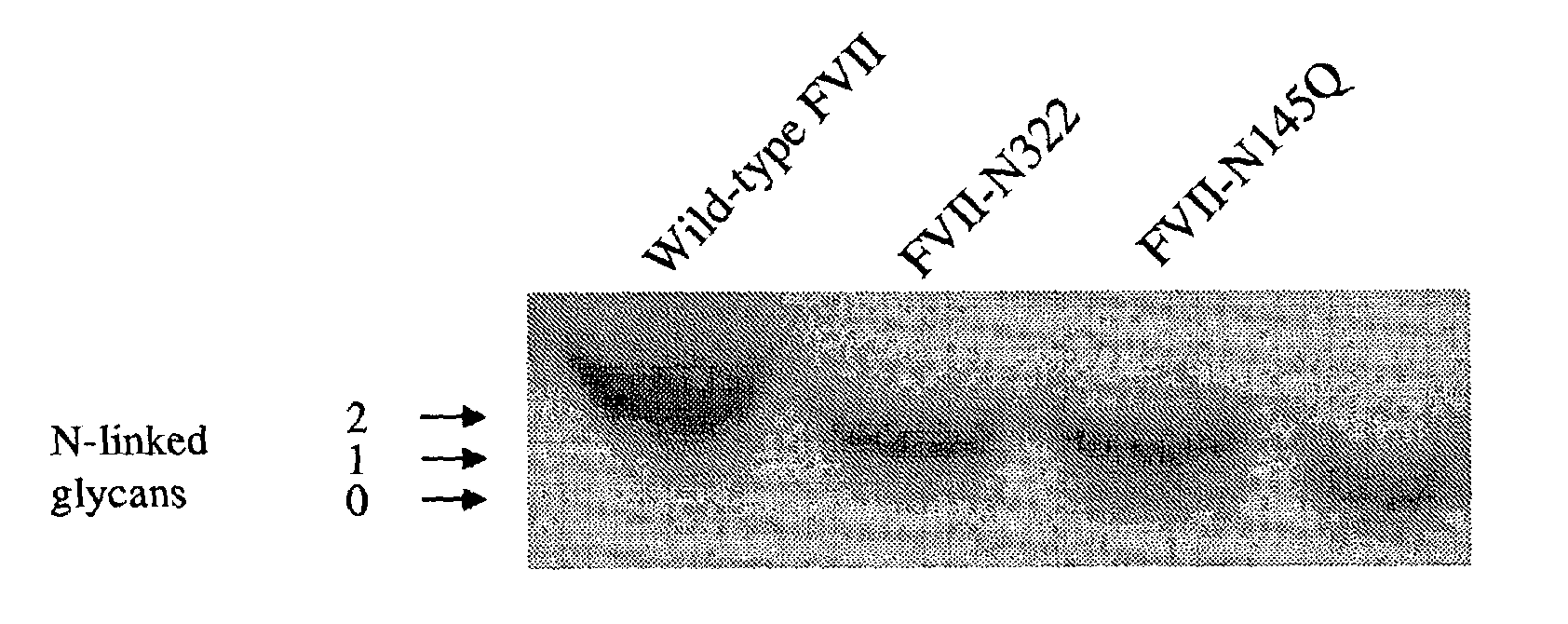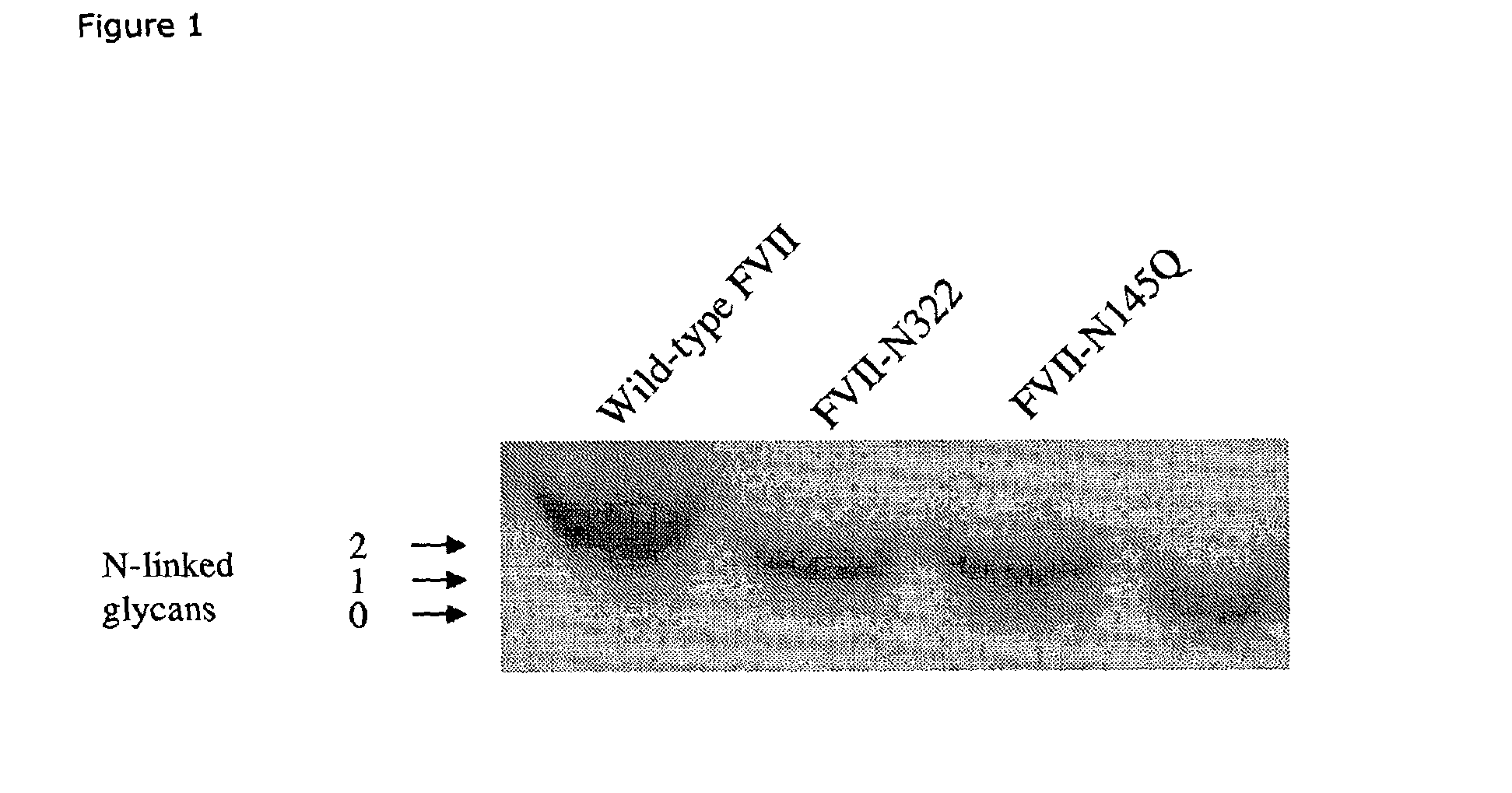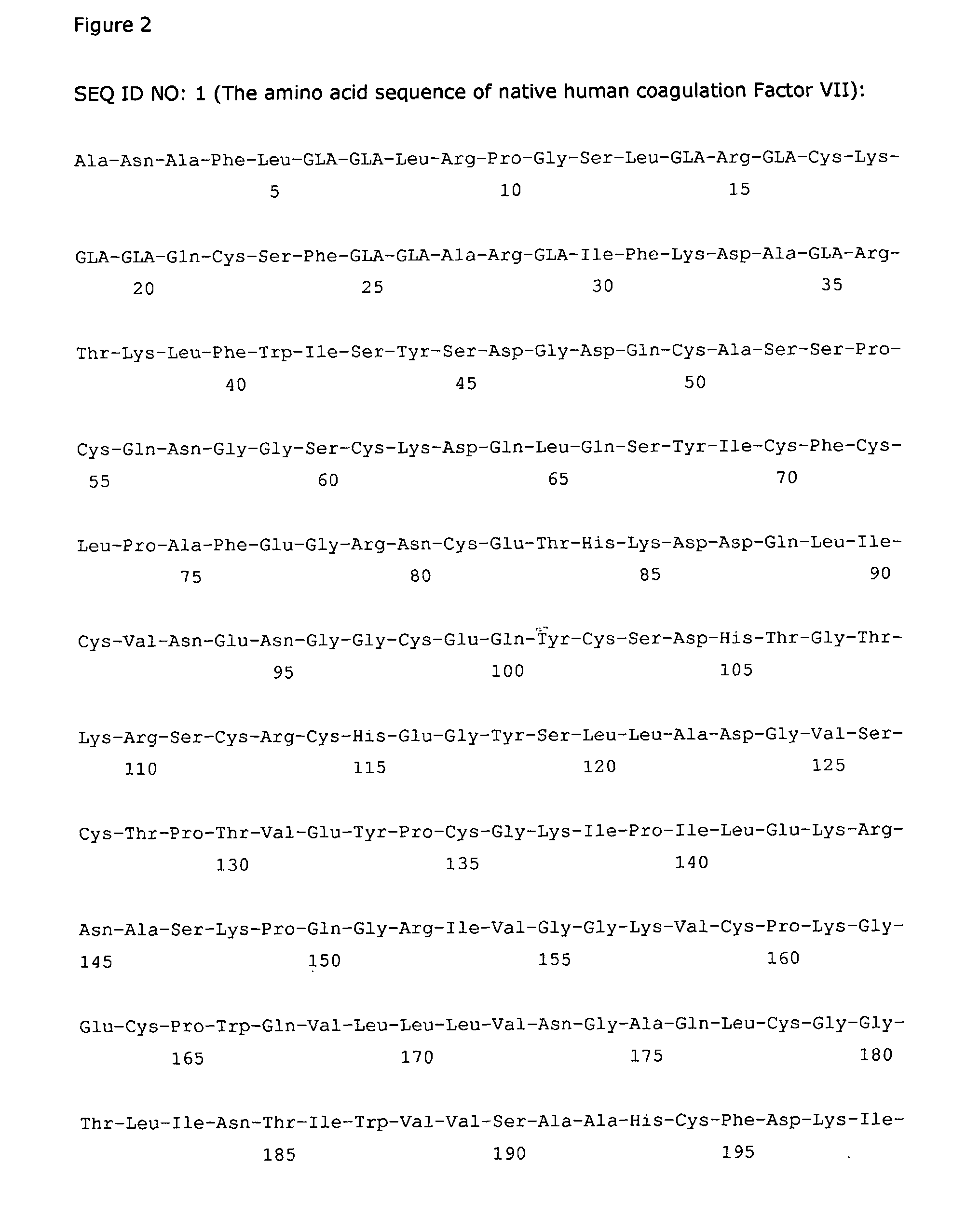Glycosylation-Disrupted Factor VII Variants
a technology of coagulation factor and variant, which is applied in the field of human coagulation factor vii polypeptides, can solve the problems of fibrin clot formation and bleeding, and achieve the effects of improving the coagulation rate and reducing the formation of fibrin clots
- Summary
- Abstract
- Description
- Claims
- Application Information
AI Technical Summary
Benefits of technology
Problems solved by technology
Method used
Image
Examples
example 1
Assays for Factor VII Biological Activity
[0095] The following experiments are performed to test the biological activity of Factor VII variants according to the invention.
[0096] Wild-type Factor VIIa and Factor VIIa variants (both hereafter referred to as “Factor VIIa”) may be assayed in parallel to compare directly their biological properties. The assay is carried out in a microtiter plate (MaxiSorp, Nunc, Denmark). The chromogenic substrate D-Ile-Pro-Arg-p-nitroanilide (S-2288, Chromogenix, Sweden), final concentration 1 mM, is added to Factor VIIa (final concentration 100 nM) in 50 mM Hepes, pH 7.4, containing 0.1 M NaCl, 5 mM CaCl2 and 1 mg / ml bovine serum albumin. The absorbance at 405 nm is measured continuously in a SpectraMax™ 340 plate reader (Molecular Devices, USA). The absorbance developed during a 20-minute incubation, after subtraction of the absorbance in a blank well containing no enzyme is used to calculate the ratio between the activitie...
example 2
Construction and Expression of Glycosylation-Disrupted Factor VII Variants
[0102] The following experiments were performed to produce glycosylation-disrupted Factor VII variants.
[0103] 1. Construction of expression plasmids encoding human factor VII or glycosylation disrupted factor VII variants: Full-length human factor VII cDNA originating from the λHVII565 clone generated by Hagen et al. (Proc. Natl. Acad. Sci. USA, 83, 2412-2416, 1986) [accession no. M13232] was inserted into the BamH I / EcoR I sites of pcDN3.1+ (Invitrogen) to create the pTS8 plasmid. Constructs encoding disrupted factor VII variants were generated by site-directed mutagenesis of pTS8 using the QuickChange kit (Stratagene) as recommended by the manufacturer. The N145Q mutation was introduced with the 5′-TTCTAGAAAAAAGACAAGCCAGCAAACCCCAAGG-3′ (SEQ ID NO:2) forward primer (mutation in bold) and the complementary reverse primer, and the N322Q mutation was introduced with the 5′-GTGGGAGACTCCCCACAAATCACGGAGTACATG-3′ ...
example 3
Bioactivity of Glycosylation-Disrupted Factor VIIa
[0106] The following experiment was performed to test the bioactivity of glycosylation-disrupted Factor VIIa polypeptides.
[0107] Medium was collected from CHO—K1 derived stable clones transfected with expression plasmids containing the gene of wild-type human factor VII or the gene of human factor VII with one or two N-glycosylation knock-out mutations as described in Example 2 herein. The media were analyzed for factor VII content by enzyme-linked immunosorbent assay (ELISA) and for factor VII activity by clot assay. For the clot assay, media and factor VII standards diluted in 50 mM Pipes pH 7.2, 100 mM NaCl, 2 mM EDTA, and 1% BSA were mixed with an equal volume of factor VII deficient medium. The clotting time of each sample was determined in an ACL 300R (Instrumentation Laboratory) clotting instrument by addition of an equal volume of rabbit thromboplastin in 12.5 mM CaCl2. The relationship between factor VII units and clotting...
PUM
| Property | Measurement | Unit |
|---|---|---|
| concentration | aaaaa | aaaaa |
| pH | aaaaa | aaaaa |
| pH | aaaaa | aaaaa |
Abstract
Description
Claims
Application Information
 Login to View More
Login to View More - R&D
- Intellectual Property
- Life Sciences
- Materials
- Tech Scout
- Unparalleled Data Quality
- Higher Quality Content
- 60% Fewer Hallucinations
Browse by: Latest US Patents, China's latest patents, Technical Efficacy Thesaurus, Application Domain, Technology Topic, Popular Technical Reports.
© 2025 PatSnap. All rights reserved.Legal|Privacy policy|Modern Slavery Act Transparency Statement|Sitemap|About US| Contact US: help@patsnap.com



